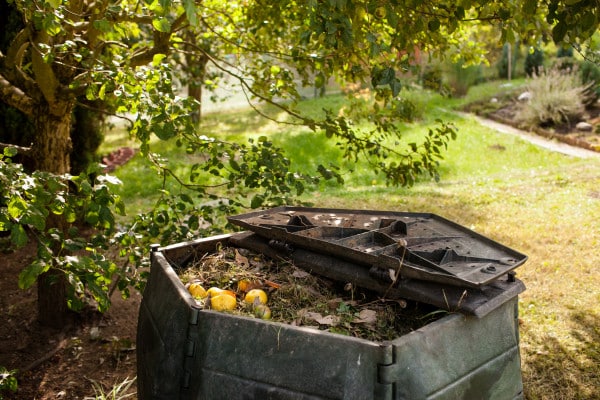Keeping soil healthy and full of nutrients should be the main goal for all gardeners. Ultimately, it means we can grow better plants. That’s because they’re more likely to be able to fight off pests and diseases. Find out about organic soil fertility in the garden so you can have the best conditions to grow.
A well-managed, fertile soil can supply plants with all the nutrients they need to grow well. Bear in mind that this isn’t a one-off process. Instead, it’s something that we continually need to do. One of the easiest and most important ways is to add plenty of organic matter to the soil.
What is organic matter?
Organic matter is the final stage of what were once living organisms such as plants, leaves, animal manure and grass clippings.
Organic matter helps because it gives plants nutrients and improves the state of the soil, which in turn helps plants grow better.
Clay soils have tiny particles which means they can easily become one big mass of either waterlogged or baked soil which stops nutrients and air reaching plant roots. Therefore, adding organic matter to clay soil helps stop the tiny clay particles sticking together so that soil then drains more easily, and plant roots can grow.
On the other hand, sandy soil has large particles which means water drains away too fast before roots can access water flowing through the sand particles. In this case, adding organic matter helps those larger particles hold together to keep more water and nutrients available for the plant roots to access.
How to improve soil fertility
Improving soil is an ongoing process but a relatively easy one once you get into a routine and remember a few important points.
Add compost
Compost is organic matter that has decomposed which you can make yourself or buy from garden centres and specialist compost suppliers. It can be applied to the soil at any time of the year but is best applied during the spring. Traditionally a 20cm layer is dug into the soil but if you’re a No-Dig gardener then just applying it to the soil surface would be adequate.
It can also be added to the soil as a mulch layer in the autumn. It’s best applied when the soil is wet or moist as the mulch layer will then help keep the moisture in the soil. Also, it will help to suppress weeds from growing.

Avoid walking on soil
Walking on soil can compact the soil particles making it difficult for water air and oxygen to reach plant roots. Especially if your soil is clay based.
Try and make your growing areas of a size that you can reach into all parts without having to step on the soil. Generally, this is a maximum width of 1.2m.

Rotate crops
In the veg patch, grow crops in different areas each year as some veg use more nutrients than others. Using crop rotation techniques will also help to stop specific pests and diseases building up in the soil.

Grow green manure
This applies to both the veg and ornamental flower patch. If at any time in the year any of your borders are going to be empty of plants, sowing seeds of a quick growing green manure will not only stop the nutrient rich top layer of soil blowing away, but will also help keep the weeds down. In addition, some of them may also add nitrogen to the soil.
Most garden centres sell green manure seeds, and the seed packets give instructions on when and how to remove the crop. But generally, the idea is to cut the plants down before they flower and either dig them into or leave on top of the soil.
- Italian grazing rye and Winter Tares (vetch) can be sown in the autumn months
- Clover and mustard in the spring months
- Phacelia and fenugreek in the summer months


Leave A Comment